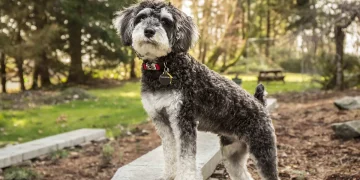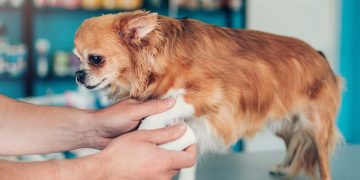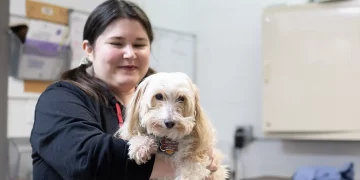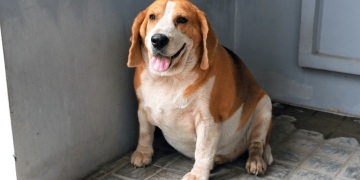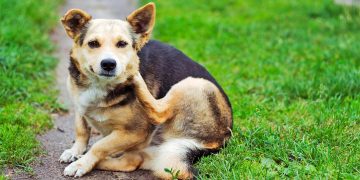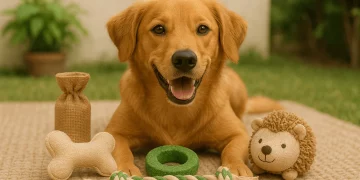Beyond the Myth: Why “Low Maintenance” Doesn’t Mean “No Maintenance”
Short-haired dogs are often advertised as the perfect low-maintenance companions—no mats, minimal shedding, and no grooming fuss. But that perception, while partly true in terms of tangling and trimming, often leads to one dangerous oversight: neglecting routine brushing. Many owners assume that dogs with sleek coats like Beagles, Boxers, Dalmatians, or French Bulldogs don’t need grooming beyond the occasional bath. Unfortunately, this assumption leaves the door open for a range of preventable skin problems that could have been easily managed through regular brushing.
Short-haired breeds may not sport the dense, luxurious coats of their long-haired cousins, but their skin is just as susceptible to irritation, dryness, clogged pores, and infection. In fact, because their fur doesn’t provide the same insulating or protective layer, any skin abnormality—whether a rash, bite, or allergy flare-up—is often more exposed and worsened by lack of grooming attention. Routine brushing isn’t just about removing loose hair—it’s a cornerstone of proactive skin health, even for dogs who don’t look like they need it.
Understanding the Function of Brushing for Short Coats
Brushing performs multiple important roles that go far beyond aesthetic maintenance. First, it distributes natural oils (sebum) across the skin and coat. Sebum keeps the skin moisturized, adds a subtle protective layer, and maintains coat sheen. In short-haired dogs, sebum can build up and lead to greasy patches or clogged hair follicles if not dispersed. Brushing helps evenly distribute those oils, reducing buildup that can otherwise attract bacteria.
Second, brushing helps remove dead hair, microscopic debris, and dander—particles that might otherwise remain trapped on the surface and irritate the skin. Even short coats shed, often more than owners realize, especially during seasonal transitions. If this dead hair isn’t removed, it can cause itchiness, and in dogs prone to allergies, exacerbate inflammation.
Third, brushing provides a regular opportunity to monitor your dog’s skin. During brushing, you can spot small wounds, hot spots, ticks, dry patches, lumps, or flaking before they turn into larger problems. This simple ritual becomes a preventative diagnostic tool, catching potential issues early.
Common Skin Conditions in Short-Haired Breeds—and How Brushing Helps
Despite their neat appearance, short-haired dogs are not immune to dermatological problems. In fact, some breeds are genetically predisposed to skin disorders, and their short coats can make them more vulnerable to environmental triggers. Regular brushing acts as a defense against many of these conditions.
Canine Acne and Folliculitis: Short-haired breeds like Boxers, Bulldogs, and Dobermans are prone to acne—typically small pustules around the chin and muzzle. Brushing removes oil and bacteria buildup that might otherwise clog follicles and trigger infections. Using a soft-bristled brush in these sensitive areas can prevent minor breakouts from escalating into painful sores.
Allergic Dermatitis: Short-coated dogs may show allergic reactions more visibly and quickly. Brushing removes pollen, dust, and irritants from the coat before they penetrate the skin. Dogs with seasonal allergies benefit from daily gentle brushing during high pollen months to minimize exposure.
Hot Spots and Moist Dermatitis: These are painful, inflamed areas caused by excessive licking, biting, or scratching. They often form under short fur and are easier to miss until they become large and infected. Brushing increases your chances of noticing early signs like heat, odor, or slight redness.
Dry Skin and Dandruff: Many short-haired dogs, particularly those in drier climates or homes with indoor heating, suffer from flaky skin. Brushing stimulates natural oil production and exfoliates the skin, reducing dandruff and promoting hydration. Dogs with visible flakes benefit from brushes that gently massage the skin, improving circulation.
Parasite Detection: Fleas and ticks are easier to spot on short-haired dogs—but only if you’re regularly looking. Brushing allows you to inspect for parasites and comb out flea dirt before infestations take hold. A fine-toothed comb works well for parasite checks, especially in high-risk seasons.
The Right Tools for the Coat Type
Choosing the right grooming tool makes a big difference in effectiveness and your dog’s comfort. For short-haired breeds, avoid heavy rakes or slicker brushes intended for thick undercoats. Instead, opt for one or a combination of the following:
- Rubber curry brush: Gentle and ideal for removing loose hair while massaging the skin. Great for breeds like Pugs, French Bulldogs, and Pit Bulls.
- Bristle brush: Soft and ideal for daily use, spreading oils and keeping the coat shiny.
- Grooming glove: Excellent for dogs who resist brushes. It allows for tactile grooming and doubles as a bonding activity.
- Shedding blade or short coat deshedder: Use during heavy shedding periods to remove dead undercoat hair without overworking the skin.
Brushing sessions should last 5–10 minutes and feel enjoyable for your dog. Brushing too aggressively or using the wrong tool can damage hair follicles and create micro-abrasions that invite infection.
Frequency Matters More Than You Think
How often should you brush a short-haired dog? The answer depends on the individual, but general guidance suggests 2–3 times per week as a baseline. Dogs with known skin sensitivities or allergies may benefit from daily brushing during flare-up seasons. Brushing after walks or playtime is especially useful for removing debris, preventing itchiness, and reducing indoor allergen load.
Dogs that spend time outdoors will need more frequent brushing than indoor-only pets, as they’re exposed to more dirt, pollen, and parasites. Similarly, senior dogs or those with reduced mobility may not self-groom as effectively, requiring extra support from brushing.
The frequency of brushing also directly correlates to shedding levels. If your dog is leaving hair on furniture or carpets despite its short coat, chances are you’re under-brushing. A consistent grooming routine dramatically reduces household fur and associated allergens, benefiting both your dog and your cleaning schedule.
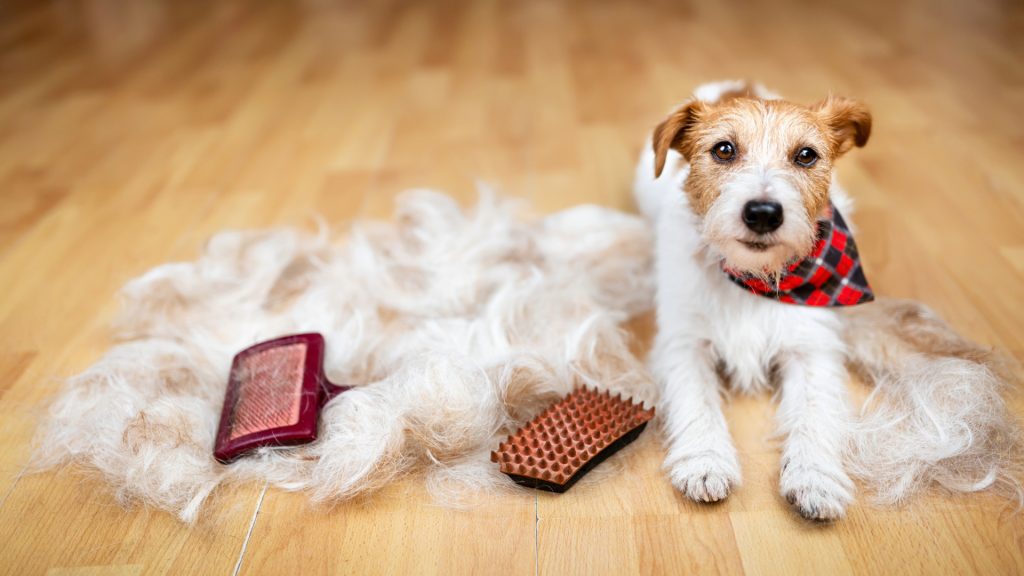
Brushing as a Preventative Habit, Not a Fix
Many owners only begin brushing once they notice a problem: a rash, an odor, or a shedding frenzy. But by then, prevention has already failed. Regular brushing should be treated as a foundational element of canine wellness—just like daily walks or clean water.
It’s especially important in households where dogs are bathed infrequently. While baths help clean the skin, excessive bathing strips natural oils. Brushing fills that gap—maintaining skin health without compromising its barrier.
Make brushing part of your dog’s daily or weekly schedule. Associate it with calm, enjoyable moments—after meals, before bedtime, or during quiet time. Dogs thrive on routine, and consistent grooming becomes a predictable source of comfort and attention.
Brushing as Bonding and Behavior Booster
Grooming isn’t just functional—it’s emotional. Brushing can improve your dog’s mood and deepen your bond. The physical touch, gentle strokes, and focused attention simulate social grooming found in pack behavior. For anxious or high-energy dogs, grooming can act as a calming ritual.
It’s also an opportunity to reinforce positive behaviors. Dogs that learn to enjoy brushing sessions are easier to manage in other care situations like nail trimming, vet visits, or dental checks. If your short-haired dog is young or new to brushing, start with short, rewarding sessions using a soft glove or brush, gradually building tolerance and trust.
Avoid forcing grooming or using it as punishment. The more your dog sees brushing as a soothing part of their day, the more relaxed they’ll be during actual grooming—and more willing to allow health checks that could catch early warning signs of skin issues.
When to See a Vet About Skin Concerns
Brushing is not a cure-all. If you notice signs of skin problems that persist despite regular grooming—such as excessive licking, patchy hair loss, pustules, crusts, or inflamed skin—it’s time to consult your veterinarian. These could indicate allergies, bacterial or fungal infections, mange, or hormonal imbalances. Early diagnosis is crucial.
Also, if your dog resists brushing or flinches when touched in specific areas, it may be signaling discomfort or pain beneath the skin. Don’t ignore sudden changes in grooming tolerance—these could be signs of underlying health issues.
Conclusion: The Power of the Simple Brush
Short-haired dogs may not need trims or detangling, but they absolutely benefit from routine brushing. It’s the simplest way to care for their skin, monitor their health, and bond as companions. More than just a cosmetic step, brushing prevents common skin diseases, distributes natural oils, removes allergens, and alerts you to subtle changes before they become problems.
By brushing your short-haired dog regularly and gently, you’re not just keeping them sleek—you’re keeping them healthy from the inside out. In a world of specialty shampoos and expensive treatments, the humble brush remains one of the most powerful tools in preventive pet care.







